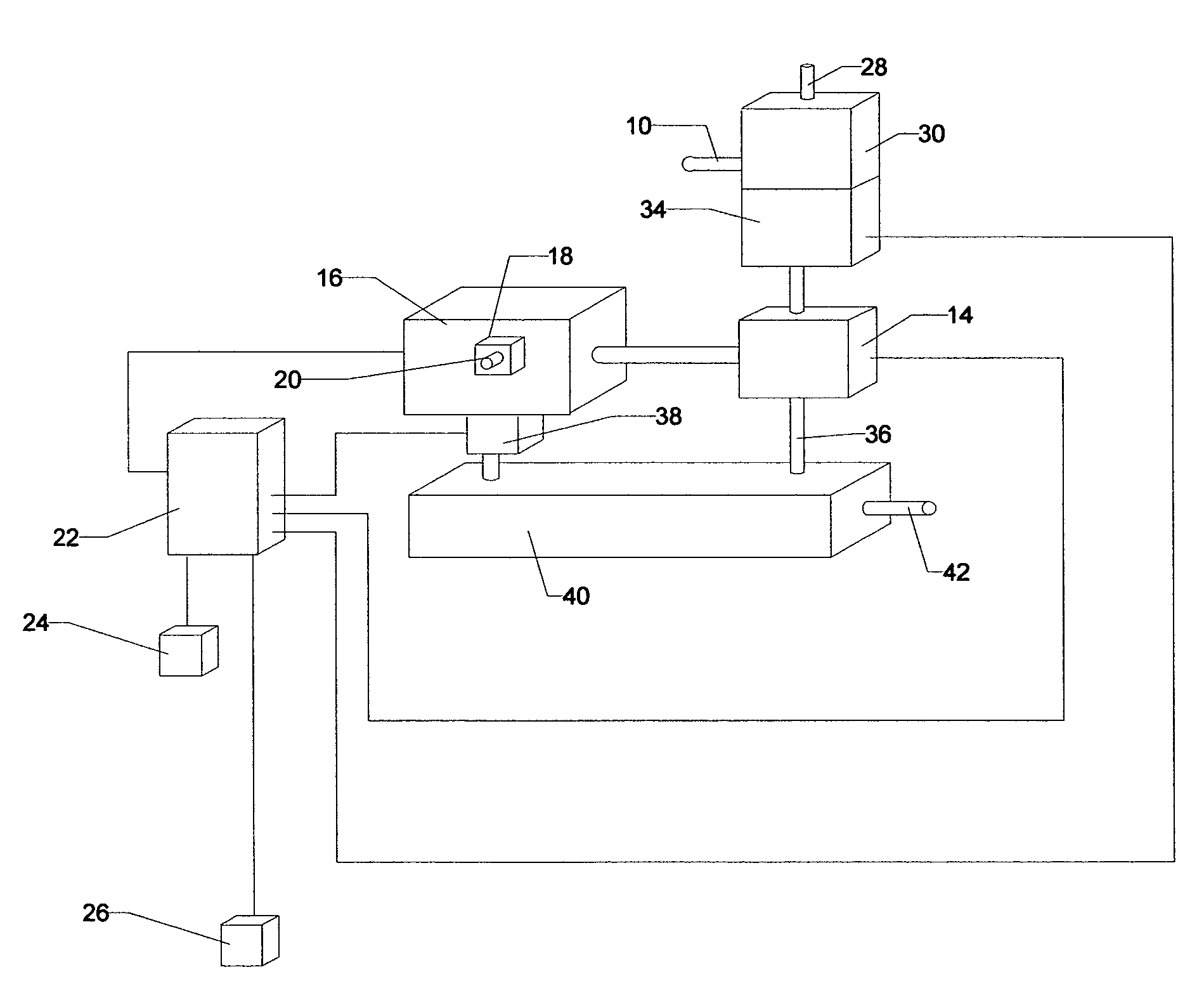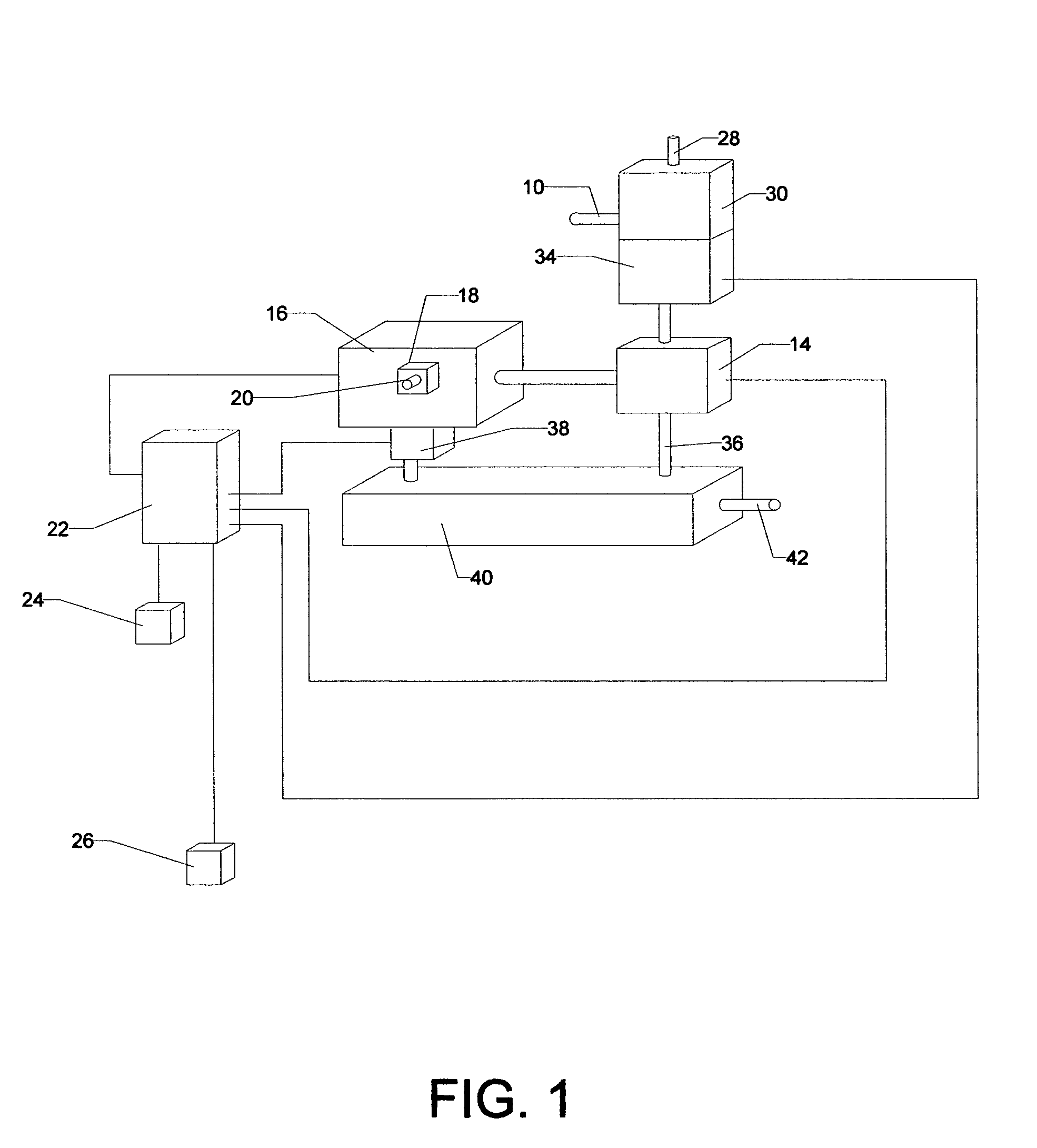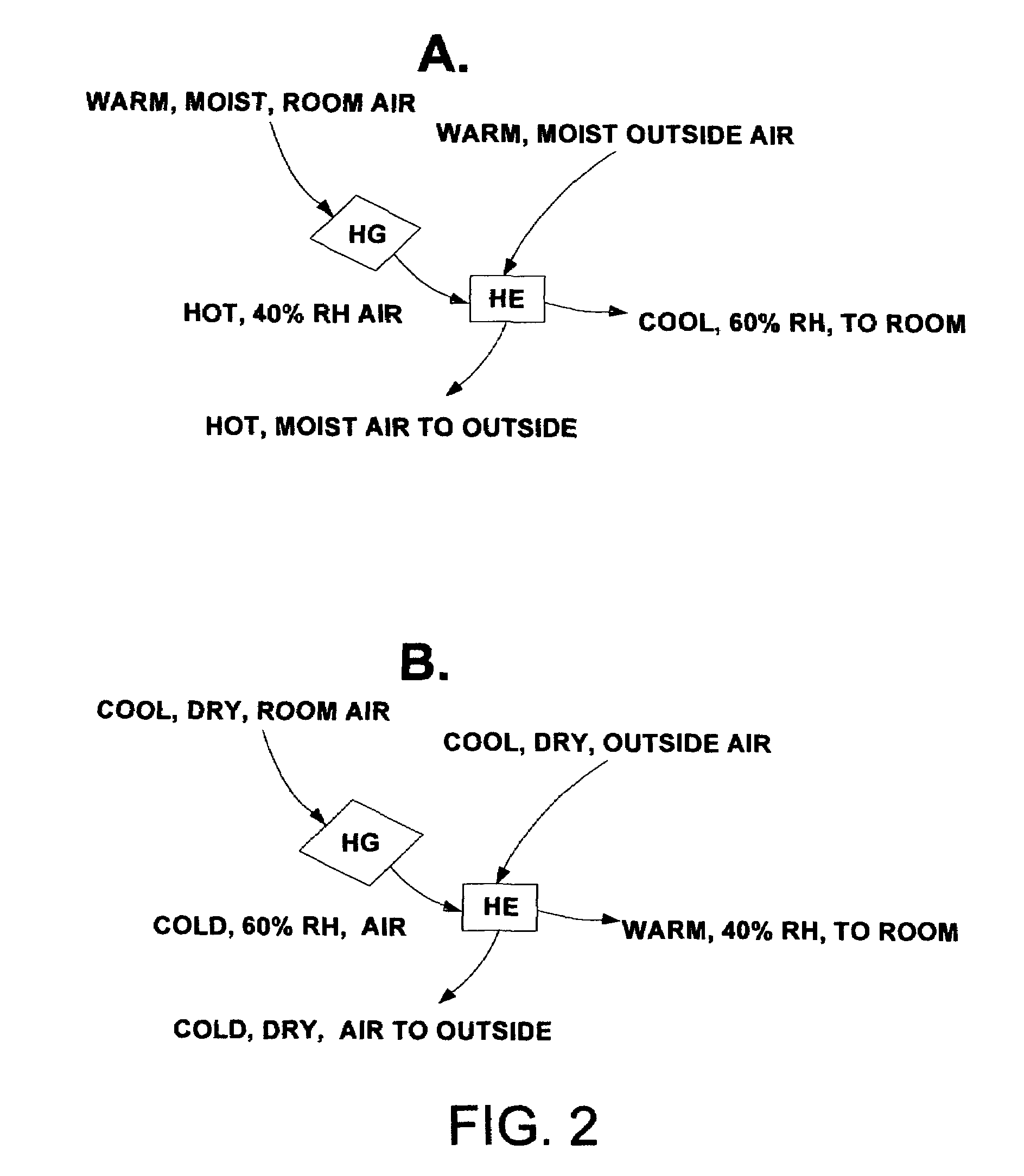System for allergen reduction through indoor humidity control
a technology of indoor humidity and allergen reduction, applied in the field of systems, can solve the problems of not being particularly effective in relieving symptoms, high-efficiency particulate, and ineffective electrostatic filtration, so as to reduce allergen levels, prevent the drying of mucous membranes, and improve efficiency
- Summary
- Abstract
- Description
- Claims
- Application Information
AI Technical Summary
Benefits of technology
Problems solved by technology
Method used
Image
Examples
Embodiment Construction
[0089]The present invention provides a humidity control system (HCS) (FIG. 1) to control indoor humidity within a specified range so as to reduce allergen levels, particularly those of house-dust mites (HDM), within an interior space of a building (including but not limited to one or more rooms, an interior space of part of a building or dwelling, and an interior space of an entire building or dwelling), while maintaining sufficient moisture to prevent drying of mucous membranes of individuals inhabiting the space. The invention also provides a hydrogel absorber / desorber for reversibly absorbing water vapor from air or releasing water vapor to air. The invention is based on the surprising discovery, on the part of the inventors, that a reversible hydrogel desiccant may be used as the active element of a humidifier / dehumidifier with much more efficiency and lower energy consumption than traditional humidification / dehumidification systems. The invention provides a complete HCS that tr...
PUM
| Property | Measurement | Unit |
|---|---|---|
| LCST | aaaaa | aaaaa |
| LCST | aaaaa | aaaaa |
| diameters | aaaaa | aaaaa |
Abstract
Description
Claims
Application Information
 Login to View More
Login to View More - R&D
- Intellectual Property
- Life Sciences
- Materials
- Tech Scout
- Unparalleled Data Quality
- Higher Quality Content
- 60% Fewer Hallucinations
Browse by: Latest US Patents, China's latest patents, Technical Efficacy Thesaurus, Application Domain, Technology Topic, Popular Technical Reports.
© 2025 PatSnap. All rights reserved.Legal|Privacy policy|Modern Slavery Act Transparency Statement|Sitemap|About US| Contact US: help@patsnap.com



